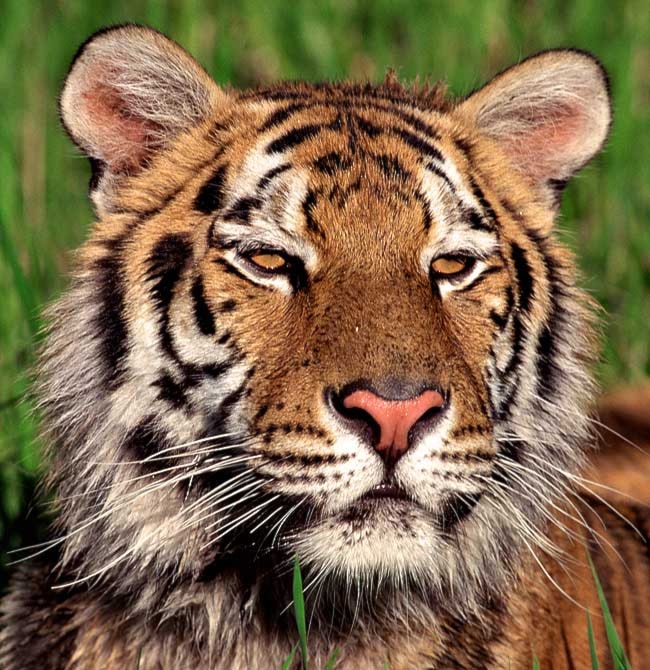There is something exhilarating about spying on a family of wild tigers shuffling through the Sumatran jungle.
Recently, the World Wildlife Fund posted a video of the big cats on YouTube (http://www.physorg.com/news182079671.html). The footage is just a smidge over a minute long, but it is amazing to watch the cubs peer at the lens and nuzzle the camera.
For five years, researchers have tried to capture the animals on video using wildlife-activated camera traps.
After all that effort, this one-minute film represents the first live-action film of a young family of tigers in the wild.
This is not surprising.
There are only 400 Sumatran tigers left on the planet.
Their jungle home is being hacked down at an astonishing rate for pulpwood and palm oil plantations.
In the last 25 years, 10.5 million acres of tropical forests and peat swamps have been destroyed - roughly 65 per cent of Riau Province’s forest cover - mostly to feed the pulp business of Asia Pulp and Paper and Asia Pacific Resources International Holdings Limited.
In feeding global demand for paper, those international companies have almost wiped out habitat for Indonesia’s elephant and tiger populations.
Today, that hardest-hit Riau Province, where the tiger video was shot, has just 210 elephants left. The region also sustains half the nation’s tiger population -Â only 192 of the cats survive there.
The World Wildlife Fund is starting a year-long campaign in February to coincide with the Chinese calendar’s Year of the Tiger.
The goal of the Tx2: Double or Nothing campaign is to get world leaders to commit to actions that will double the world’s tiger population over the next 12 years. The arm twisting will happen in earnest in September, when Russian President Vladimir Putin hosts a Heads of State Tiger Summit in Vladivostok.
If you want to see what’s at stake, watch that extraordinarily rare YouTube video.
It’s a poignant film.
You’ll see fully two per cent of Riau Province’s remaining tigers ambling down a dirt path and having their curiosity piqued by a camera trap.
That the film is just a little more than a minute long is fitting because this particular cat family isn’t expected to survive very long.
“When these cubs are old enough to leave their mother, which will be soon, they will have to find their own territory,” said Ian Kosasih, WWF-Indonesia’s forest program director, in a statement on the fund’s website.
“Where will they go? As tiger habitat shrunk with so much of the surrounding area having been cleared, the tigers will have a very hard time avoiding encounters with people. That will then be very dangerous for everyone involved.”
So, the coming year’s lobby effort will probably determine the fate of the world’s tigers.
If action isn’t taken to preserve Asian jungles, such YouTube footage will be all that remains of the tiger.
